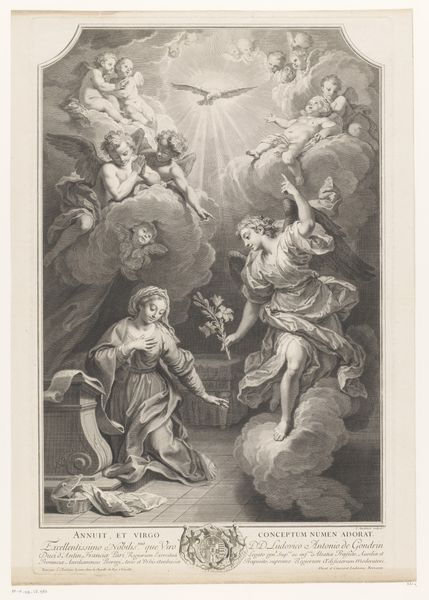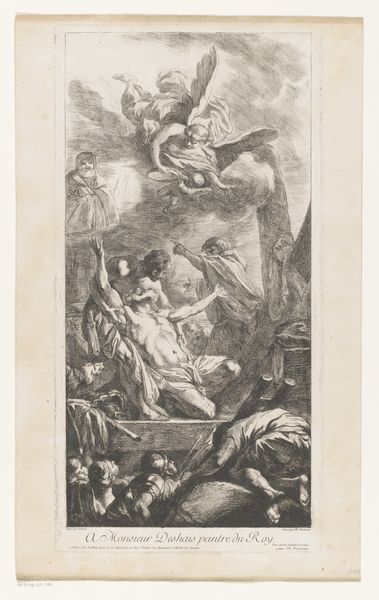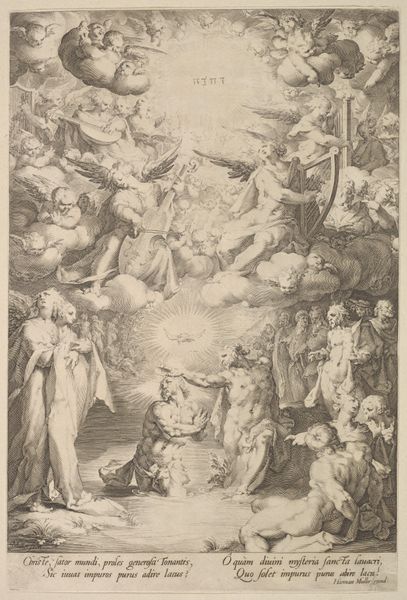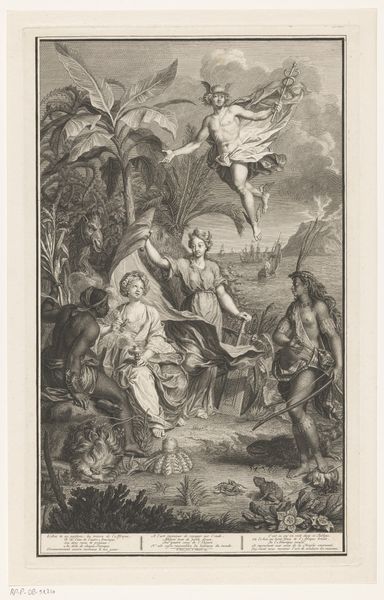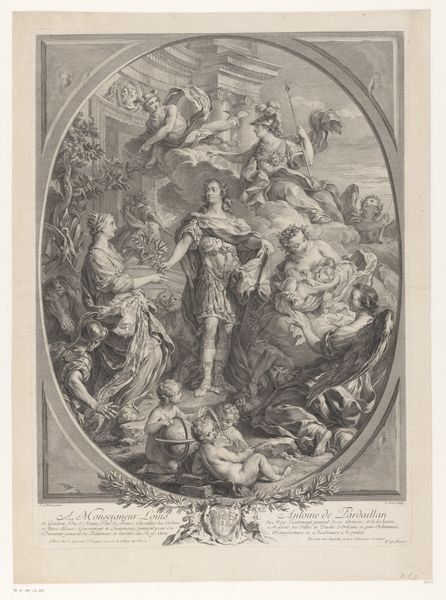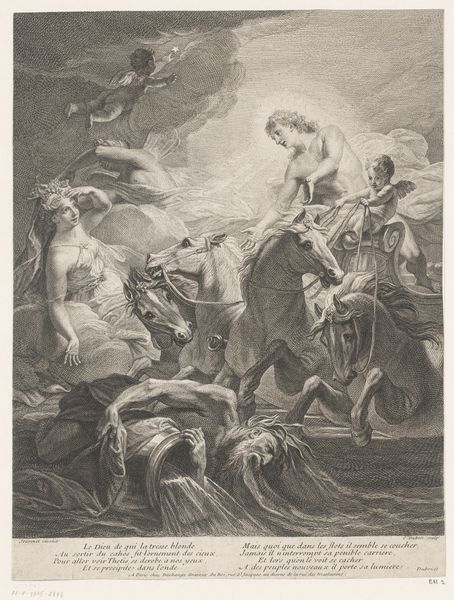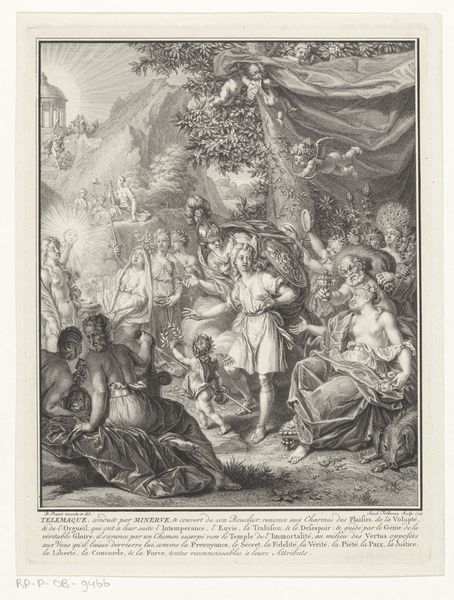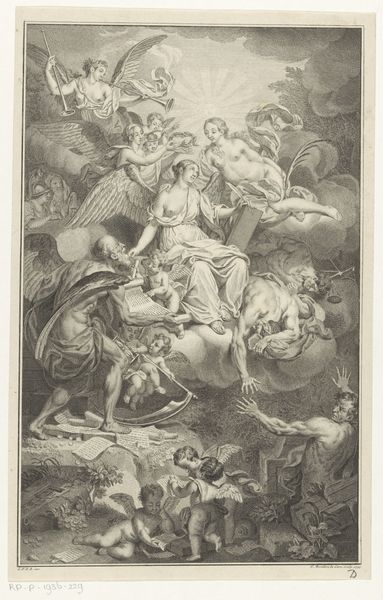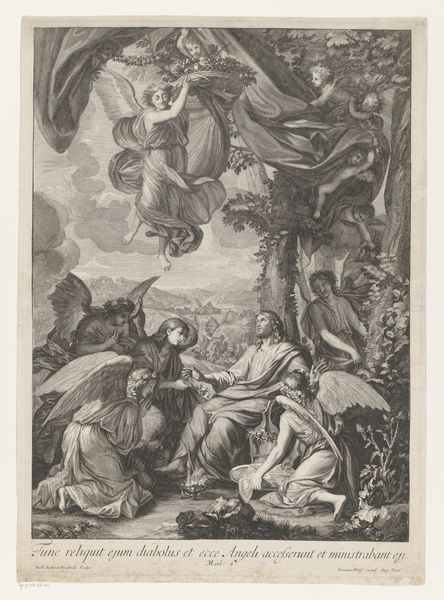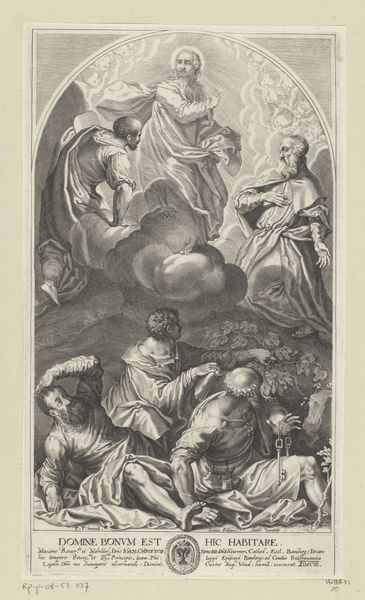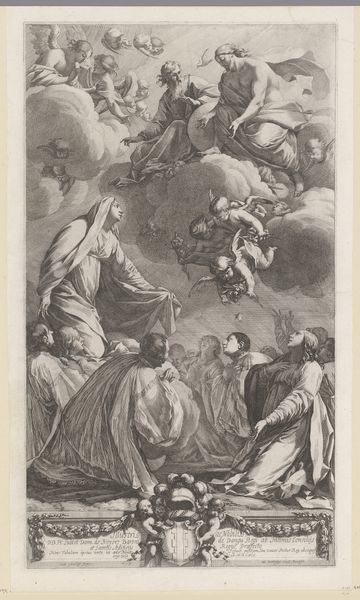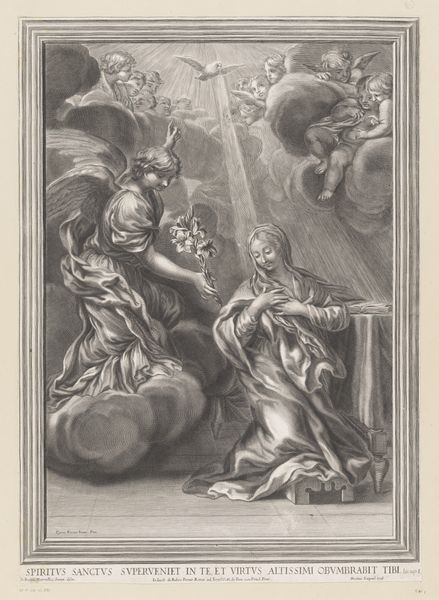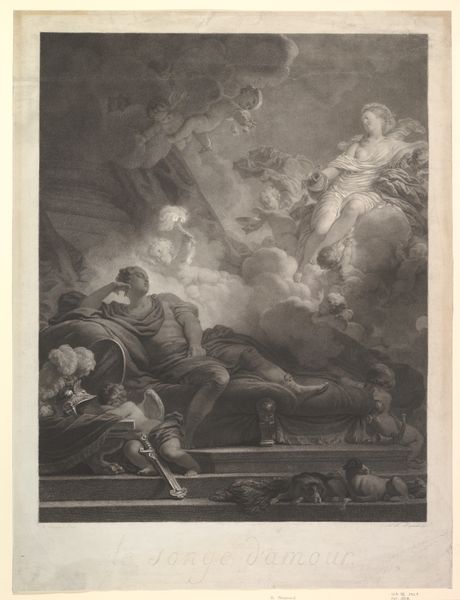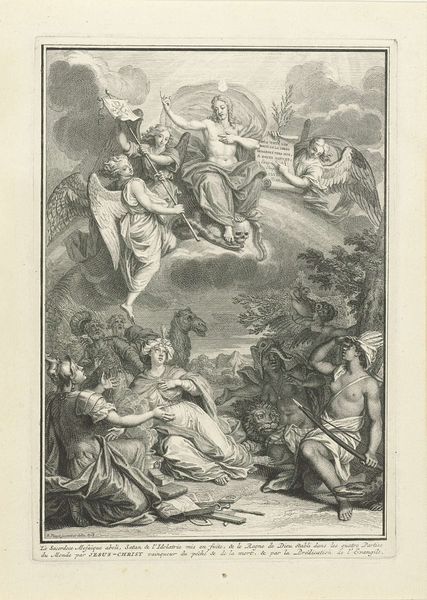
Dimensions: height 188 mm, width 146 mm
Copyright: Rijks Museum: Open Domain
Curator: This image fairly leaps off the page with theatricality! I am struck immediately by the dramatic contrasts and sense of divine intervention. Editor: Indeed. Let's delve into what's depicted. We're looking at an engraving from 1766 entitled "Verschijning van Gerechtigheid aan koning Saul" – or "The Appearance of Justice to King Saul" – crafted by Simon Fokke. It resides here at the Rijksmuseum. Curator: Fokke’s composition is masterful. Justice, sword in hand, descends from the heavens accompanied by an angelic figure, likely meant to be understood as retribution delivered to the tormented King Saul, cowering on his throne with such striking fear and anguish in his eyes. Editor: Considering the historical context, Saul’s reign was fraught with disobedience, leading to God withdrawing his favor. The print captures that turning point, highlighting the societal implications of leadership and divine accountability within the prevalent monarchical systems of the 18th century. Curator: It's not merely about political power, but also spiritual well-being. Note how Saul shields his eyes. This action transcends mere physical aversion, becoming an outward manifestation of inner guilt and unworthiness. Editor: Absolutely. Consider, too, the choice of the baroque style – with its flourish and exuberance – as fitting the narrative to inspire an emotional reaction to moral failings on the part of rulers and to warn about the consequences of unrighteous governance. How might it have been perceived by those viewing it at the time, particularly regarding their ideas on monarchy and religious belief? Curator: The engraving acts as a potent cultural reminder, serving not just as an illustration, but also as a stern lesson encoded within religious symbols of power. The terror on Saul's face – framed within such decorative finery of throne and angelic presence – suggests a deep internal psychological disruption when facing divine reckoning. Editor: Yes, this encounter serves as a potent visual narrative concerning power, obedience, and consequences in that era. Curator: Precisely, seeing these symbols recontextualized allows us insight not just into religious history but the social memory imprinted through images. Editor: I agree. It enriches our view of this intersection, highlighting both its artistic style and lasting themes relevant throughout centuries.
Comments
No comments
Be the first to comment and join the conversation on the ultimate creative platform.
